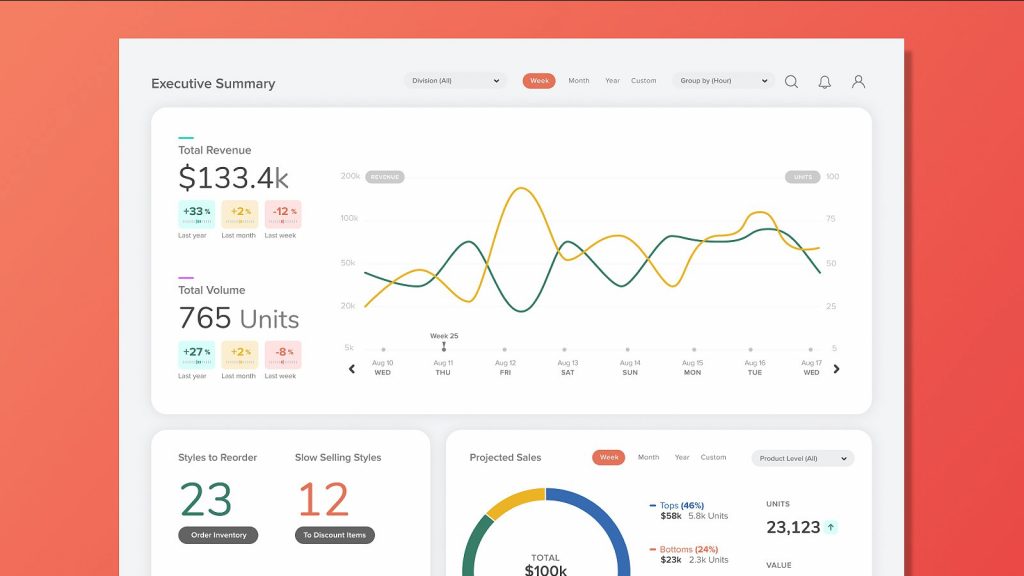Improving the Ecommerce Customer Experience
The ecommerce customer experience encompasses every interaction with an online business, from initial product discovery to post-purchase support. With over $8 trillion in global ecommerce sales projected for 2026, providing an excellent customer experience is crucial for online businesses wanting to attract and retain loyal, high-value customers in our increasingly competitive digital marketplace.
This comprehensive guide examines vital opportunities for improving the ecommerce customer experience in 2024 through optimised website design, engaging content strategies, frictionless checkout processes, proactive customer support, and impactful post-purchase touchpoints. Let's explore the customer journey and how to shape positive perceptions, meet expectations, and foster meaningful relationships at each stage.
Table of Contents
Understanding Today's Online Shoppers

Today's online shoppers have high expectations regarding their shopping experiences. Here's an overview of what matters most:
Convenience and Speed
- 73% of customers abandon their carts due to a long or complicated checkout process
- 40% expect to be able to complete a purchase within 5 minutes
- Shoppers want simplicity and efficiency throughout the shopping journey
Personalisation
- 72% only engage with personalised marketing messages
- 83% are more likely to purchase when content is personalised
- Customers expect relevant, tailored recommendations and offers
Omnichannel Experience
- 66% have used multiple channels for shopping in the past six months
- 85% expect consistent interactions across channels
- Shoppers want flexibility to move between devices and online/offline
With sky-high demands on convenience, personalisation and consistent omnichannel experiences, ecommerce retailers have much room for improvement.
Understanding the Ecommerce Customer Journey
The customer journey encompasses every touchpoint and interaction a customer has with your brand. This starts long before a sale is made and continues long after.
When mapping the ecommerce customer journey, key phases typically include:
Research and Discovery
This is when potential customers start researching solutions for their needs and discover your online store. Ensuring findability at this stage is vital to introduce your brand.
Evaluation and Comparison
Customers evaluate and compare different ecommerce providers. Your website content, product information, online reputation, and ease of use influence purchase consideration.
Purchase Decision
Customers decide whether or not to complete a purchase with your store. Trust indicators and the checkout process itself significantly impact success rates.
Post-Purchase Experience
Customer experience doesn't end after a sale is made! Post-purchase touchpoints like order tracking, returns, and customer service still matter.
When customers have a seamless, enjoyable journey from end to end, they gain advocacy for your brand. Understanding pain points across the eCommerce customer lifecycle provides opportunities for CX optimisation.
Gathering Voice-of-Customer Insights

Voice-of-customer (VoC) research gathers direct feedback from customers about their experiences. This qualitative data is invaluable for enhancing CX.
VoC methods include:
- Customer interviews – one-on-one, in-depth interviews exploring customer viewpoints.
- Focus groups – moderated discussions with existing or potential customers.
- Customer surveys – structured questionnaires to gather customer feedback.
- User testing – observe how customers navigate products/services.
- Customer analytics – assess behavioural and transactional data for insights.
- Monitoring online reviews – third-party sites detail genuine customer experiences.
- Customer advisory panels – regular feedback from a group of engaged customers.
VoC provides context on CX pain points and improvement ideas across the customer journey. Direct customer viewpoints enable enhancements to be tailored to actual needs.
For example, Gap Inc. has a specialised VoC program that identifies CX issues early. They continue optimising core customer journeys by rapidly acting upon VoC findings in checkout flows and product descriptions. This nurtures loyalty despite a highly competitive retail landscape.
Critical Areas of Focus for Elevating eCommerce Customer Experiences
To better meet and exceed modern customer expectations, ecommerce businesses should focus improvement efforts on four key areas:
1. Website Performance
With shorter attention spans and abundant choices online, slow or buggy websites are a significant barrier to positive experiences.
Key stats:
- 53% abandon sites that take over 3 seconds to load
- A 1-second delay in load times can cause a 7% drop in conversions
To optimise performance:
- Compress images and files
- Enable caching and browser caching
- Streamline web hosting infrastructure
- Test regularly on mobile
Fast page speeds and seamless site navigation are the foundations of good CX.
2. Product Information
Detailed and engaging product content inspires trust in shoppers and informs purchase decisions.
Best practices include:
- High-quality images/video
- Interactive features like image zoom
- Comprehensive descriptions
- Easy access to specs and sizing
Without rich product information, customers cannot make confident choices.
3. Checkout Process
The final hurdle to purchasing completion and optimising checkout is vital for reducing abandonment.
Tactics to improve checkout include:
- Guest checkout options
- Clear/visible cart summary
- Minimal form fields
- Automatic form-filling
- Multiple payment methods
- Clear transaction security messaging
With a smoother, more straightforward checkout, customers will likely follow through with orders.
4. Post-Purchase Experience
The experience doesn't end after checkout. Post-purchase touchpoints also impact satisfaction and retention.
Getting this stage right means:
- Quick order confirmations/tracking info
- Proactive delivery updates via email/text
- Easy returns procedures
- Follow-up ‘thank you' message
- Customer reviews/ratings
Ongoing relevant communication and seamless returns keep customers happy.
Emerging Trends That Enhance CX

Alongside focusing on the core foundations of good ecommerce experiences, keeping up with the latest innovations can give retailers a competitive advantage.
AI Product Recommendations
- 63% are more likely to purchase when AI recommendations are accurate
- 75% want personalised recommendations
- AI allows hyper-customised suggestions based on individual interests
Advanced algorithms crunch vast volumes of customer data to display relevant, tempting items in real-time across the site.
VR/AR Shopping
- 71% want to use VR/AR tech to assess products before buying
- Can display true-to-life product visuals
- Allows customers to visualise items in their own spaces before purchase
Immersive new technologies bridge the tactile gap of online shopping, building confidence and excitement.
Voice Assistants
- Comfort ordering through smart speakers is up 47% since 2020
- Reduces friction by removing visual interfaces
- Allows easy re-ordering and checking order status
- An alternative mode for elderly or disabled customers
With smart home device usage soaring, expanding ecommerce capabilities to voice creates convenience.
Live Streaming
- 63% have watched a live stream to engage with brands/products
- Builds personal connections between customers and business/staff
- Creates excitement and urgency around new launches or offers
- Allows real-time interaction and demoing of products
Combining entertainment with shopping in engaging video formats can capture interest.
Driving Ongoing CX Improvements
While new trends provide short-term novelty, customer-centric businesses should embed processes for continually monitoring, assessing and improving experiences.
Gather Insights
- Website analytics for behaviour tracking
- Feedback forms and ratings
- Mystery shoppers to test processes
- Sales team anecdotes
- Monitoring reviews and social media
Combining quantitative data with qualitative human input gives balanced insights into pain points requiring attention.
Identify Issues
Look at insights to diagnose problem areas and assess which parts of the journey cause customer struggles or dissatisfaction. Common issues include complicated navigation, lack of product information, payment failures at checkout, delivery delays and difficulties with returns.
Implement Changes
Create an improvement plan with clear actions that address the priority issues uncovered. This might involve website redesigns, adding new content, integrating a more straightforward payment solution, expanding fulfilment options or overhauling returns procedures.
Review and Iterate
Once solutions are rolled out, continue looping around to gather fresh performance data and customer feedback. Identify if issues are resolved or new ones have emerged, using learnings to inform the next round of refinements.
Ongoing iteration and evolution ensure experiences remain competitive.
Key Metrics to Track

To accurately evaluate enhancements and guide strategies, ecommerce businesses should monitor a mix of quantitative and qualitative CX metrics.
Quantitative Metrics
- Site traffic – Volume and sources
- Bounce rate – Single page visits
- Pages/session – Engagement
- Cart abandonment – Lost checkouts
- Conversion rate – Visitors to customers
- Sales metrics – Revenue, AOV, products
Qualitative Feedback
- Surveys – Customer comments on sites
- Reviews – 3rd party rating sites
- NPS – Likelihood to recommend
Combining metrics gives a comprehensive picture of end-to-end experiences over time. Leaders should define targets and review progress in regular reports.
Steps for Small Businesses with Limited Resources
For smaller retailers with budget and team constraints, here are five pragmatic steps to elevate CX.
1. Gather Quick Feedback
Email customers asking three questions:
- What do you like about shopping with us?
- What's one thing we could do better?
- What addition would improve your experience?
Short personalised requests give quality insights from existing shoppers, identifying easy, quick win improvements.
2. Enable Reviews
Activate reputable 3rd party review functionality like Stamped, Feefo or Trustpilot. This gives unbiased ratings/feedback used by 92% of researching purchases. Address criticisms directly and publicly where possible.
3. Offer Live Chat
On most sites, this convenient channel boosts conversion by over 20%. Have well-informed team members provide personalised assistance to shoppers in real-time during business hours.
4. Send Abandoned Cart Emails
Automated yet personalised emails tempt customers to complete carts later, recovering up to 25% of drops. Test copy and incentives to maximise impact.
5. Ship Fast
Do whatever possible to dispatch quickly after payment, even upgrading shipping providers if needed. Proactively communicate expected delivery dates. 86% see speedy fulfilment as key.
Conclusion and Future Outlook
Ecommerce customer experience quality is now a critical competitive differentiator. As expectations rise and choice expands, shoppers demand seamless, personalised, omnichannel experiences with rich product information, speedy fulfilment and hassle-free returns.
Retailers must optimise core elements around site performance, product content, checkout and post-purchase while deploying emerging innovations in AI recommendations, AR/VR and live streaming.
Small players can still delight shoppers by proactively soliciting feedback and quickly addressing concerns, enhancing reviews, adding live chat assistance, being transparent around shipping and tempting back those abandoning purchases.
With online spending expanding to USD 738 billion globally in 2024, retailers have considerable opportunities to capture customers' minds and heartshare. AsCX is now intrinsic to commercial success, listening, understanding, and dynamically adapting to ever-evolving shopper desires, giving retailers the best chance of thriving into the future.
Frequently Asked Questions
Why is customer experience so necessary for ecommerce businesses?
In an increasingly competitive online marketplace, customer experience is the critical differentiator that builds loyalty, drives repeat purchases and generates word-of-mouth recommendations. With typically lower overhead costs than physical stores, ecommerce retailers rely on returning happy customers for sustainable commercial success.
What's the most essential element of optimising online customer journeys?
While all stages impact the overall experience, most industry experts agree that removing friction from checkout and reducing cart abandonment should be the top priorities. Smoothing payment processes and reducing last-minute drop-offs are the fastest levers to increase conversion rates and transactions from site traffic.
How much investment is required to elevate online customer experience?
The good news is that positive experiences do not require a substantial financial investment. While complex functionality like VR showrooms or live shopping video calls for resources, huge CX gains can come via low-cost improvements like site speed optimisations, inviting customer feedback, responding publicly to reviews, offering essential live chat functions and sending personalised post-purchase communications via email. Prioritising quick wins makes an impact.
Should I focus attention on the website or mobile app experience?
Your customers should! Ensure your brand provides a consistent, integrated journey no matter what touchpoint or channel a customer uses over time. 70% of shoppers move between desktops, smartphones and apps to complete purchases, so websites and mobile apps require ongoing optimisation and testing to meet expectations.
What emerging innovations seem most promising for improving future experiences?
Artificial intelligence and machine learning have enormous potential to revolutionise ecommerce experiences. As algorithms improve at predicting individual customer preferences and intents based on an ever-growing breadth of data points, hyper-personalised interactions can be delivered across sites. Expect intelligent product recommendations, tailored promotions, customised site content and even automated post-purchase recommendations to rise based on AI capabilities. Voice-based interfaces will also change experiences, especially in buying repeat purchase essentials, checking order status and seeking product information.
